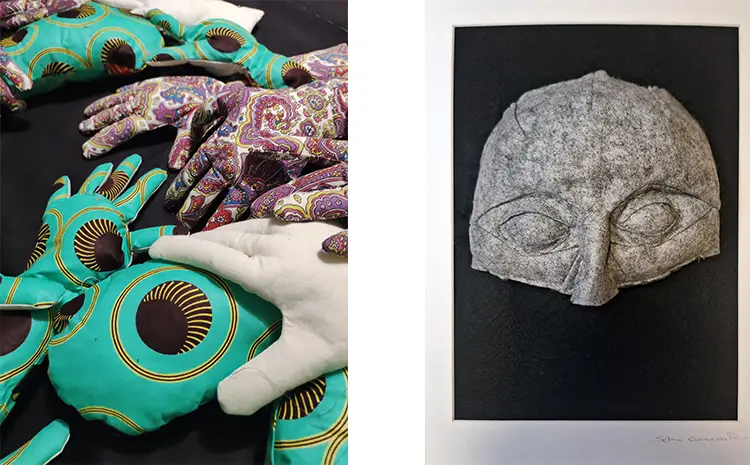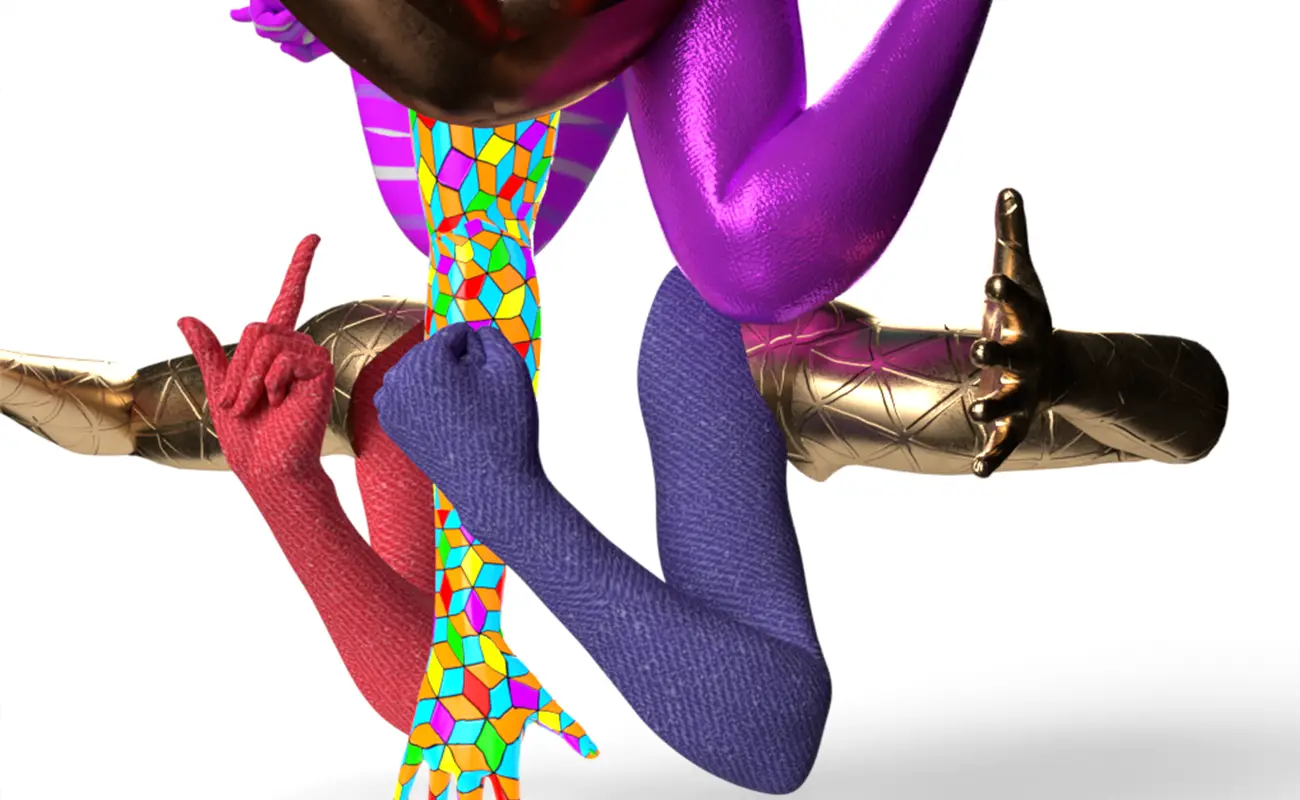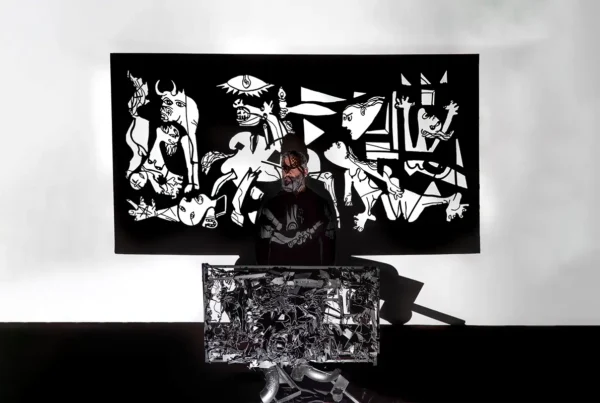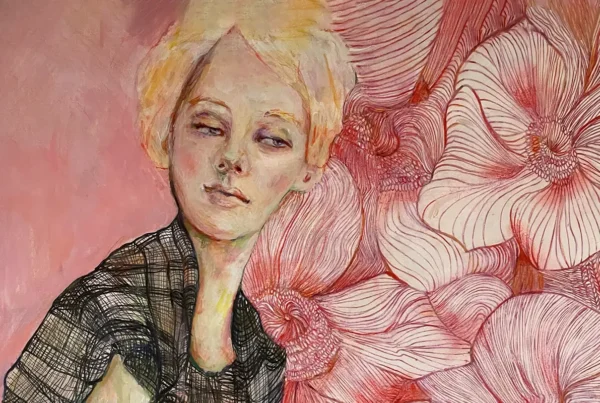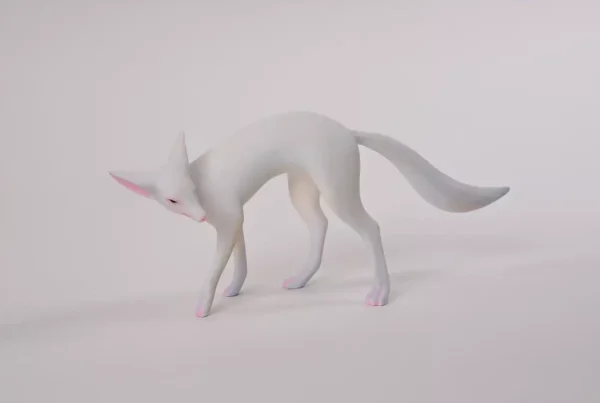“My textile sculptures and immersive installations invite reflection on identity, diversity, and the way materiality shapes human expression.”
An Art of Convergence: Textiles, Technology, and Tradition
Selma Eduarda Pereira, a Portuguese artist born in Lagos in 1983, has forged an uncommon path through art by merging the tactile world of textiles with the expanding horizons of digital media. Her educational journey reflects this hybrid sensibility. Starting with a Sound and Image course at ESAD in Caldas da Rainha and later shifting focus to Fashion and Textile Design in Castelo Branco, her academic formation has been deliberately interdisciplinary. A formative internship with designer Michelle Lowe-Holder in London introduced her to the expressive depth of fashion as an artistic language. Later, a specialisation in Textile Design at Central Saint Martins allowed her to refine her technical mastery, particularly in fabric manipulation.
Instead of taking a conventional route for her postgraduate studies, Pereira pursued a Master’s in the History of the Algarve, where she examined local customs, with a particular interest in the region’s textile legacies. This research deepened her engagement with heritage and informed her artistic outlook, enriching her understanding of how cultural memory is encoded in fabric. Her PhD in Digital Media Art marked a decisive pivot towards a practice-based methodology. Working closely with her advisor, Adérito Fernandes-Marcos, and other collaborators, she began developing installation-based projects that engage with the aesthetics of post-digital art, blurring the boundaries between analog and algorithmic textures.
Her academic and artistic practices have always intersected. Alongside participating in artistic residencies and exhibitions, she has worked as a university lecturer, including a teaching collaboration with the Biennial of Art in Vila Nova de Cerveira. These overlapping roles—researcher, educator, and artist—form the framework through which she continues to interrogate the tactile and virtual layers of her work. Her artistic journey, firmly rooted in rigorous study and a hands-on relationship with materials, is a continuing dialogue between ancestral knowledge and contemporary innovation.
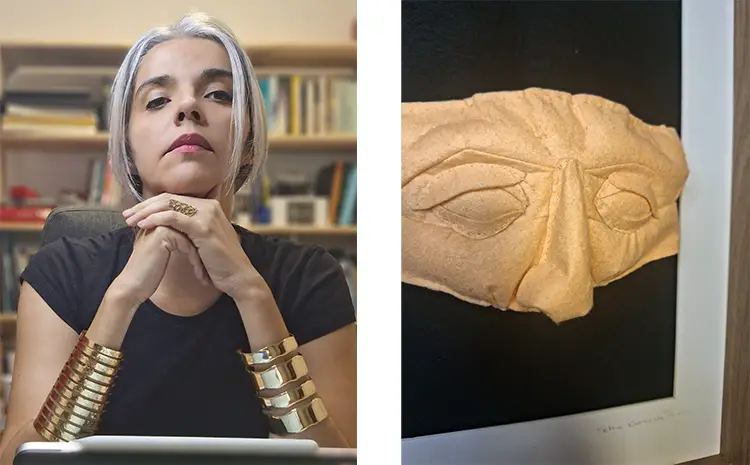
Selma Eduarda Pereira: Reconstructing Identity in Hybrid Space
Pereira’s creative process emerges from a thoughtful balance of conceptual investigation and technical experimentation. Her methodology begins with a focused inquiry into a theme—often one tethered to digital culture, identity, and the recontextualisation of traditional practices. Once a concept is established, she embarks on both theoretical reflection and hands-on exploration with materials, particularly textiles. The artwork evolves as a synthesis of physical making and digital simulation, shaped to adapt across exhibition formats—whether physical installations, virtual experiences, or hybrid displays.
At the heart of Pereira’s practice is a commitment to soft materials and their expressive potential. Her works are not simply objects but sensorial experiences that invite interaction and discovery. Whether through immersive installations or augmented elements, she navigates the tension between material presence and digital abstraction. Textiles serve not only as artistic media but also as metaphors for identity—layered, stitched, and mutable across time and space. The physicality of fabric, when juxtaposed with augmented reality or 3D modelling, reveals a conversation between what is preserved and what is reimagined.
A particularly meaningful body of work is her ongoing Hands series. It began with Entre Tecidos (Between Textiles), a site-specific installation in Mértola that honoured traditional Portuguese weaving techniques. From this foundation emerged Hands, a textile panel exploring intercultural dialogue within textile heritage, which premiered in Venice before travelling internationally. The series evolved into Hands AR, an interactive augmented reality installation that incorporated 3D modelling, sound, and movement. Viewers could experience the artwork in any space via their devices, transforming their surroundings into sites of cultural interaction. Presented in cities such as Berlin, Macau, and Tokyo, Hands AR exemplifies Pereira’s belief in art’s power to transcend geographical and material boundaries while fostering global conversations around heritage and identity.
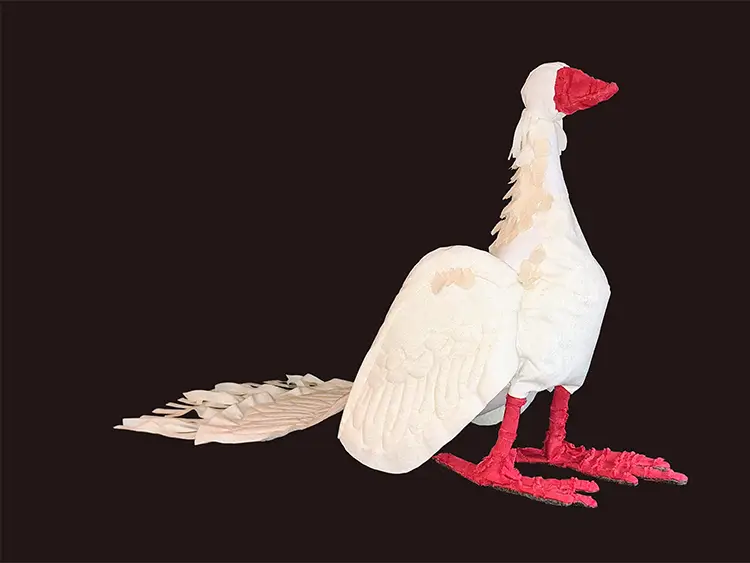
Where Fabric Meets Code: Sculpting with the Intangible
Pereira’s artistic language is shaped by her enduring fascination with soft materials, a medium she has been drawn to since childhood. Textiles offer her a form of malleability that enables sculptural thinking and material storytelling. Her transition into digital media emerged organically as she began exploring how these traditional materials could be extended through technological means. Rather than displacing fabric with screens and simulations, she integrates them, allowing each medium to enhance the other’s expressive capacity.
The inclusion of augmented reality, in particular, has expanded the reach and impact of her textile works. Digital tools serve not as embellishments but as integral components of her practice, opening new avenues for dissemination, audience engagement, and educational dialogue. In this fusion, Pereira sees not a conflict but a continuity—a way to carry forward craft traditions into the present without erasing their origins. Her process bridges the sensorial richness of textiles with the immersive potential of new media, creating artworks that occupy both historical and futuristic spaces.
In this hybrid artistic context, Pereira examines how identity, memory, and place can be renegotiated. Her installations often invite tactile interaction, digital immersion, or narrative engagement, forming a multi-sensory field where audiences become participants rather than passive viewers. This participatory quality is not incidental; it reflects her belief that art must facilitate meaningful dialogue. Whether working with physical looms or virtual modelling software, she redefines artistic production as a conversation—between mediums, histories, and the communities who engage with her work.
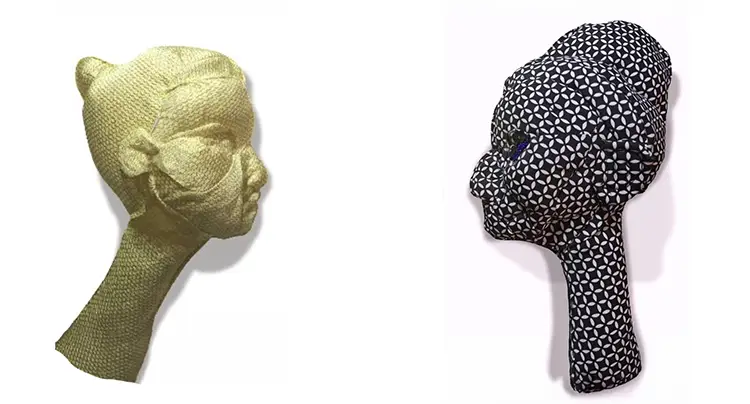
Selma Eduarda Pereira: Art as Sustainable Intersection
Sustainability, for Pereira, is not limited to the ecological implications of materials but extends to the preservation and evolution of cultural narratives. Her work reflects a deep sensitivity to the continuity of tradition in a world marked by constant digital transformation. In this sense, her artistic research becomes an act of stewardship—preserving knowledge while making it accessible and relevant through contemporary formats. She is particularly attentive to how fabric, as a carrier of cultural identity, can be activated in new contexts to address questions of presence, belonging, and transformation.
Her workspace mirrors the fluid nature of her creative process. Despite spatial constraints, she adapts her studio environment to suit each project’s demands, keeping only current materials at hand. Essential tools include her sketchbook and the Notion app, which helps her stay organised across the various dimensions of her professional life. Though her studio may appear chaotic, it is precisely this “productive mess” that enables her to generate connections between disparate ideas and media. The studio is less a fixed space than a living laboratory where tactile exploration meets conceptual rigour.
Looking ahead, Pereira continues to pursue the convergence of textile art and media art. Her future projects aim to further blur the lines between physical and digital art forms while sustaining her dual roles as an artist and academic. These explorations will deepen her investigation into how technological innovation can be harmonised with material heritage, offering new ways for audiences to experience, question, and contribute to the narratives she weaves. Whether viewed through fabric, screen, or augmented space, her art consistently seeks to generate conversations that are not only visually compelling but also culturally resonant.
